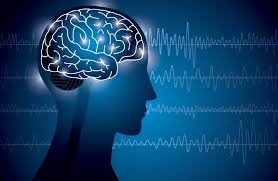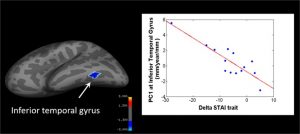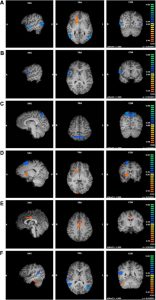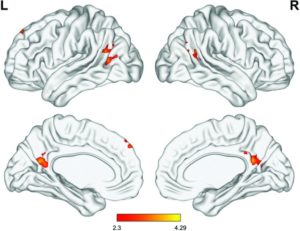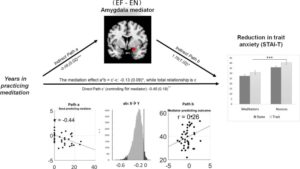Less Complex Brain Activity Characterizes Meditation by Experienced Meditators.
By John M. de Castro, Ph.D.
“Using modern technology like fMRI scans, scientists have developed a more thorough understanding of what’s taking place in our brains when we meditate. The overall difference is that our brains stop processing information as actively as they normally would.” – Belle Beth Cooper
There has accumulated a large amount of research demonstrating that meditation practice has significant benefits for psychological, physical, and spiritual wellbeing. One way that meditation practices may produce these benefits is by altering the brain. The nervous system is a dynamic entity, constantly changing and adapting to the environment. It will change size, activity, and connectivity in response to experience. These changes in the brain are called neuroplasticity. Over the last decade neuroscience has been studying the effects of contemplative practices on the brain and has identified neuroplastic changes in widespread areas. In other words, meditation practice appears to mold and change the brain, producing psychological, physical, and spiritual benefits.
It is important to understand what are the exact changes in the brain that are produced by meditation. In today’s Research News article “Characterizing the Dynamical Complexity Underlying Meditation.” (See summary below or view the full text of the study at: https://www.ncbi.nlm.nih.gov/pmc/articles/PMC6637306/), Escrichs and colleagues recruited experienced adult meditators with at least 1000 hours of meditation experience and an ongoing practice and a matched group of non-meditators. They underwent functional Magnetic Resonance Imaging (fMRI) at rest and again when performing breath focused meditation. The scans were then analyzed with Intrinsic Ignition Framework that measures the degree of elicited whole-brain integration of spontaneously occurring events across time, in other words the complexity of information processing going on in the nervous system.
They found that at rest, the meditators had higher Intrinsic-Driven Mean Integration (IDMI) than controls but during meditation they had significantly lower IDMI than the controls. The meditators also had significantly higher metastability during rest than controls but that metastability significantly declined during meditation. These results are complex but indicate that meditators have greater levels of information moving around the brain and greater complexity of information processing over time at rest but during meditation move to a state where there is less information moving around and less complexity of processing.
The results suggest that meditators have more complicated information processing going on in their nervous systems at rest but during meditation greatly simplify that activity. It would appear that this takes practice as the non-meditators did not have comparable activities during meditation. This suggests that meditation experience over time produces neuroplastic alterations of the brain that increase the ability of the brain to process information normally and to become quieter during meditation.
“Nondirective meditation yields more marked changes in electrical brain wave activity associated with wakeful, relaxed attention, than just resting without any specific mental technique.” – ScienceDaily
CMCS – Center for Mindfulness and Contemplative Studies
This and other Contemplative Studies posts are also available on Google+ https://plus.google.com/106784388191201299496/posts and on Twitter @MindfulResearch
Study Summary
Escrichs, A., Sanjuán, A., Atasoy, S., López-González, A., Garrido, C., Càmara, E., & Deco, G. (2019). Characterizing the Dynamical Complexity Underlying Meditation. Frontiers in systems neuroscience, 13, 27. doi:10.3389/fnsys.2019.00027
Abstract
Over the past 2,500 years, contemplative traditions have explored the nature of the mind using meditation. More recently, neuroimaging research on meditation has revealed differences in brain function and structure in meditators. Nevertheless, the underlying neural mechanisms are still unclear. In order to understand how meditation shapes global activity through the brain, we investigated the spatiotemporal dynamics across the whole-brain functional network using the Intrinsic Ignition Framework. Recent neuroimaging studies have demonstrated that different states of consciousness differ in their underlying dynamical complexity, i.e., how the broadness of communication is elicited and distributed through the brain over time and space. In this work, controls and experienced meditators were scanned using functional magnetic resonance imaging (fMRI) during resting-state and meditation (focused attention on breathing). Our results evidenced that the dynamical complexity underlying meditation shows less complexity than during resting-state in the meditator group but not in the control group. Furthermore, we report that during resting-state, the brain activity of experienced meditators showed higher metastability (i.e., a wider dynamical regime over time) than the one observed in the control group. Overall, these results indicate that the meditation state operates in a different dynamical regime compared to the resting-state.
https://www.ncbi.nlm.nih.gov/pmc/articles/PMC6637306/
